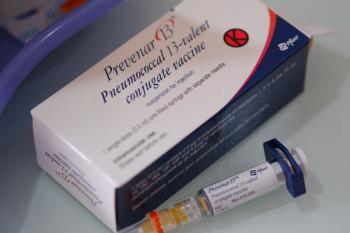
- Drug Topics December 2022
- Volume 166
- Issue 12
Digital Therapeutics for Asthma Control May Change Treatment Paradigm
Study participants experienced better outcomes vs standard of care with a digital inhaler system.
For patients with asthma, inhaler technique is everything. Inhaled therapies are the gold standard of asthma treatment, and using the correct technique can increase medication efficacy, reduce medication dose, and decrease adverse effects.1 However, patient education, and maintaining continued use of proper inhaler techniques over time, can be challenging.
In August 2022, an international team of researchers published the results2 of the CONNECT1 study (NCT03890666), a 12-week, open-label, randomized, phase 4 clinical trial of the reliever Digihalersystem (RDS), consisting of an albuterol inhaler, 90 µg/dose (Digihaler), a smart device application, and a digital health platform and dashboard. The RDS allows patients and health care providers to review inhaler use and inhalation quality to aid in clinical decision-making.
At the start of the 12-week study, a cohort of 333 participants 13 years or older were randomly assigned to either the RDS system (n=167) or standard-of-care albuterol reliever inhalers. The primary study outcome was the proportion of patients who achieved clinically meaningful improvement in asthma control, measured as an Asthma Control Test score of 20 or more at week 12 and/or an increase of 3 unitsor greater from baseline. Investigators found that participants in the RDS group had an 85.3% probability of greater odds of achieving improvement in asthma control vs standard of care after 3 months.
At the American College of Allergy, Asthma, and Immunology 2022 Annual Scientific Meeting, held November 10 to 14 in Louisville, Kentucky, investigators presented additional researchevaluating additional exploratory outcomes to answer other key questions about the RDS.
Evaluating Inhalation Technique Over Time
The albuterol Digihaler is designed with an integrated electronic module to record peak inspiratory flow (PIF) and inhalation volume in users. According to investigators,3 each of these measures “provide[s] insight into patients’ inhaler technique.” Good and fair inhalation techniques in the RDS group were defined as 45 L/min less than or equal to PIF less than or equal to 199 L/min and 30 L/min less than or equal to PIF less than or equal to 44 L/min, respectively.
During the 12-week period from baseline to study conclusion, Digihaler inhalations were more likely to be categorized as good or fair (≥95% of all inhalations per week after Week 1). After week 1—when patients were familiarizing themselves with correct technique—rates of goodinhalation were “highly consistent” from weeks 2 through 12.
Measuring Reduction of SABA Use
According to investigators, frequent use of short-acting β2-agonist (SABA) inhalers is not only indicative of poor asthma control, but it may also be a predictor of decreased health-related quality of life and increased risk of asthma exacerbations and asthma-related mortality.4
To evaluate SABA use among participants in the RDS group, investigators examined secondary outcomes that included mean weekly SABA use, the mean weekly number of SABA-free days during the 12-week study period, and the number of participant interactions with health care providers that were due to increased SABA use, identified via the RDS dashboard.
Investigators identified a 30.8% decrease in mean weekly SABA inhalation attempts—decreased from 9.1 to 6.3 at weeks 1 and 12, respectively—in the RDS group. Weekly average SABA-free days also increased, from 3.4 to 4.6 during the same period, and a total of 85 interactions between patients and providers were noted. “The SABA use data recorded…may provide clinically meaningful information to facilitate patient-[provider] discussions and guide interventions to improve asthma control and reduce reliever need,” the researchers wrote.
Digital Therapeutics for Maintenance Control
In the CONNECT2 study (NCT04677959), researchers took CONNECT1 research a step further, looking at the use of a dual-inhaler maintenance and reliever Digihalersystem (MRDS), consisting of a fluticasone propionate/salmeterol inhaler and an albuterol multidose, breath-actuated dry powder inhaler.5 The primary objective of CONNECT2 was to evaluate asthma control, measured via the Asthma Control Test (ACT), in participants using the MRDS vs standard-of-care maintenance plus a reliever inhaler.
The 24-week, open-label, multicenter, randomized, parallel-group, phase 4 study took place between February 2021 and March 2022, and included patients at 46 centers across the United States. The primary study end point was the achievement of well-controlled asthma (ACT score≥20) and/or a clinically meaningful improvement in ACT score (≥3 units) between baseline and 6 months.
A total of 427 participants were randomly assigned to either MRDS or standard of care (n=242 and 185, respectively), with similar between-group demographic and baseline characteristics. At 6 months, 63.8% of the MRDS group achieved meaningful improvement in asthma control, vs 61.9% of those in the standard-of-care group. Study results demonstrated that participants who used MRDS had 35% higher odds of achieving clinically meaningful improvement in asthma control at 6 months vs standard of care, and an 88.7% probability that a greater proportion of those in the MRDS group would achieve clinically meaningful improvement in asthma control during the same period.
“Findings from this research show that digital inhalers have the potential to provide added benefit to patients in terms of disease management and can be used as a new and objective way to help manage asthma,” the researchers concluded.
References
1. Jahedi L, Downie SR, Saini B, Chan HK, Bosnic-Anticevich S. Inhaler technique in asthma: how does it relate to patients’ preferences and attitudes toward their inhalers?J Aerosol Med Pulm Drug Deliv. 2017;30(1):42-52. doi:10.1089/jamp.2016.1287
2. Hoyte FCL, Mosnaim GS, Rogers L, et al. Effectiveness of a digital inhaler system for patients with asthma: a 12-week, open-label, randomized study (CONNECT1).J Allergy Clin Immunol Pract. 2022;10(10):2579-2587. doi:10.1016/j.jaip.2022.08.023
3. Hoyte F, Mosnaim G, Safioti G, et al. Inhaler technique maintenance in patients with uncontrolled asthma using a RelieverDigital System. Presented at: American College of Allergy, Asthma, and Immunology 2022 Annual Scientific Meeting; November 10-14, 2022; Louisville, KY. Abstract P099.
4. Hoyte F, Mosnaim G, Safioti G, et al. Short-acting Beta2-agonist use reduction among patients with uncontrolled asthma using a RelieverDigital System. Presented at: American College of Allergy, Asthma, and Immunology 2022 Annual Scientific Meeting; November 10-14, 2022; Louisville, KY. Poster P096.
5. Mosnaim G, Hoyte F, Safioti G, et al. Effectiveness of a maintenance and relieverdigital system to improve asthma control. Presented at: American College of Allergy, Asthma, and Immunology 2022 Annual Scientific Meeting; November 10-14, 2022; Louisville, KY. Poster P097.
Articles in this issue
almost 3 years ago
2022 Top News from Drug Topicsabout 3 years ago
New Approaches in Psoriasis and Psoriatic Arthritis Treatmentabout 3 years ago
Treating Skin Cancers in the Immunotherapy Eraabout 3 years ago
What’s New in Acne and Rosacea?about 3 years ago
A Study of Immune Checkpoint Inhibitors and Complication Ratesabout 3 years ago
Evaluating Chronic Itch and Quality of Lifeabout 3 years ago
Biosimilar Uptake Increases After Changes to EHRabout 3 years ago
Mental Health Telemedicine Barriers Spur Call for Reformabout 3 years ago
How Drug Shortages Are Prevented by the FDANewsletter
Pharmacy practice is always changing. Stay ahead of the curve with the Drug Topics newsletter and get the latest drug information, industry trends, and patient care tips.















































































































